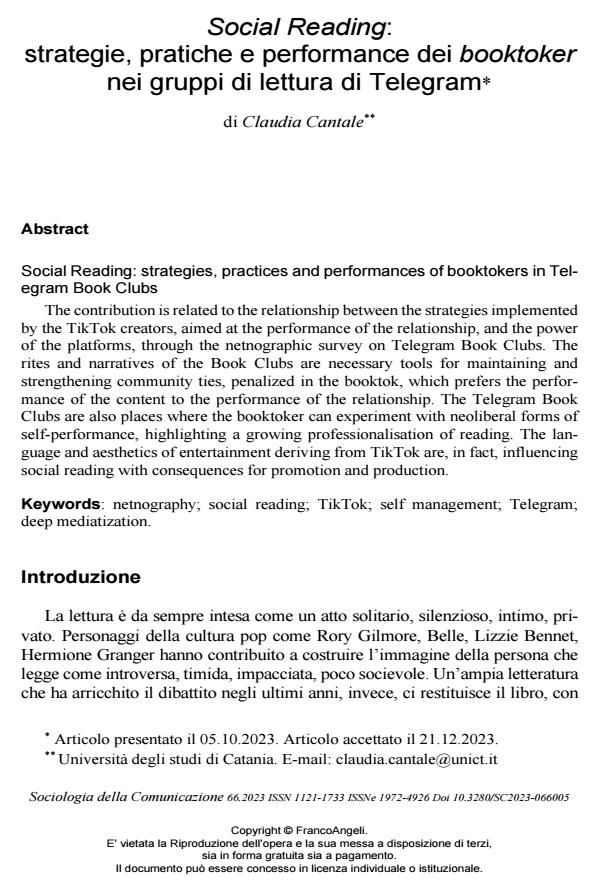Social Reading: strategies, practices and performances of booktokers in Telegram Book Clubs
Journal title SOCIOLOGIA DELLA COMUNICAZIONE
Author/s Claudia Cantale
Publishing Year 2024 Issue 2023/66
Language Italian Pages 18 P. 77-94 File size 312 KB
DOI 10.3280/SC2023-066005
DOI is like a bar code for intellectual property: to have more infomation
click here
Below, you can see the article first page
If you want to buy this article in PDF format, you can do it, following the instructions to buy download credits

FrancoAngeli is member of Publishers International Linking Association, Inc (PILA), a not-for-profit association which run the CrossRef service enabling links to and from online scholarly content.
The contribution is related to the relationship between the strategies im-plemented by the TikTok creators, aimed at the performance of the relation-ship, and the power of the platforms, through the netnographic survey on Tele-gram Book Clubs. The rites and narratives of the Book Clubs are necessary tools for maintaining and strengthening community ties, penalized in the book-tok, which prefers the performance of the content to the performance of the relationship. The Telegram Book Clubs are also places where the booktoker can experiment with neoliberal forms of self-performance, highlighting a growing professionalisation of reading. The language and aesthetics of enter-tainment deriving from TikTok are, in fact, influencing social reading with consequences for promotion and production.
Keywords: netnography; social reading; TikTok; self management; Telegram; deep mediatization.
Claudia Cantale, Social Reading: strategie, pratiche e performance dei booktoker nei gruppi di lettura di Telegram in "SOCIOLOGIA DELLA COMUNICAZIONE " 66/2023, pp 77-94, DOI: 10.3280/SC2023-066005